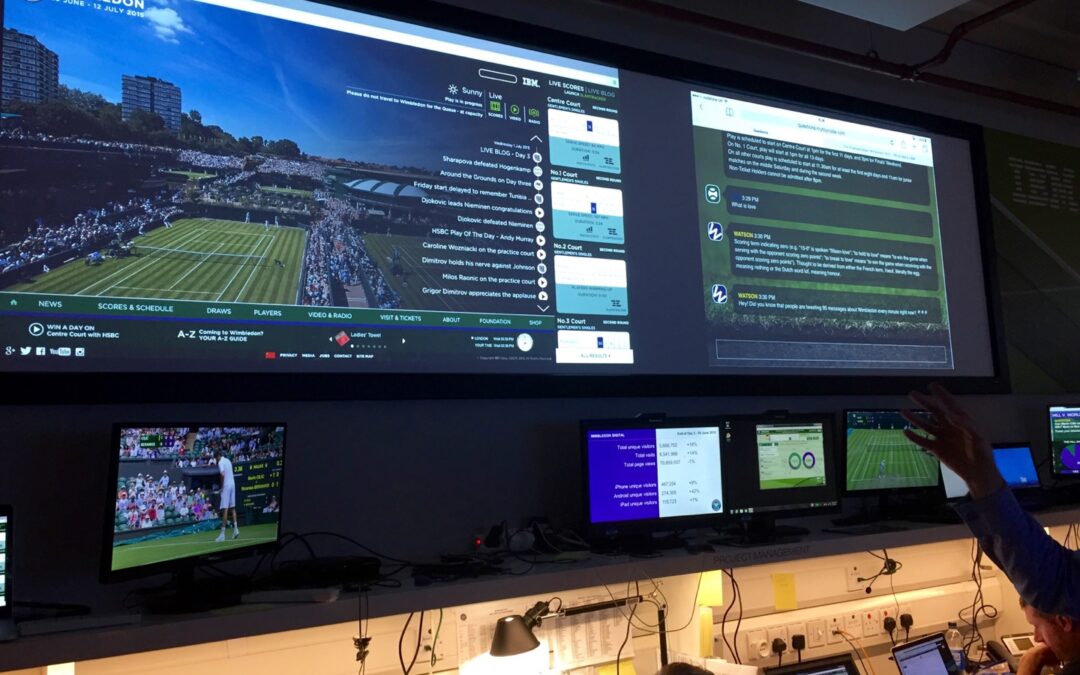Last week, I got to tour the IBM analytics bunker at the Wimbledon tennis championship to see how they combine machine and human intelligence in real-time to provide an overview of key events.
As you might expect, the command centre pulls in a vast amount of close-to-real-time social media data from Twitter to give the organisers a better sense of how tennis fans are reacting to matches as they unfold, and also to help them tailor their own social media output for maximum impact. This also helps generate better online aggregation of match information such as this summary of the twitter spike during after after Heather Watson’s dramatic match with Serena Willams.
In terms of match data, the Hawkeye system already gathers the basic information, but IBM use tennis players to add more contextual information about each shot (backhand, forehand, stuyle of winning shot, etc) from courtside positions, and this data is fed into the video timecodes meaning that at the end of a match, players and officials can view individual video clips based on types of shot and other criteria. I failed my first attempt the test to recruit inputters, who need 100% accuracy, but maybe you can do better?
IBM have been evolving this operation for a quarter of a century, but the big change this year is the introduction of its Watson cognitive computing platform to pro-actively flag upcoming milestones (e.g. a player’s 1000th winning point) and also to provide a human language interface to the vast array of stats about tennis.
In this case, Watson has been trained on both structured data such as historical statistics and also unstructured data of various kinds. In the background, when asked a question, it references both corpora of data and compares them to see which is the best match. Doing this in a text interface modelled on a messaging platform (you even see “Watson is typing…” before it returns results) is a great way to provide access to in-context knowledge.
This, I think, points to one of the most exciting potential uses of cognitive computing in the day-to-day workflow of people within large organisations: Slackbot on steroids. I love the way Slack integrates other workplace systems through a chat-style command line interface, and I can’t wait to upgrade my Slackbot to Watson so colleagues can ask simple natural language questions about work and get back useful information in-situ. At Wimbledon, this will be used by on-site media operations to give them better context for their reporting, but the possibilities for accessing knowledge quickly and easily within large organisations is very interesting indeed. To show the potential for embedding this level of cognitive computing power inside a Watson-powered Slackbot, here is a tutorial from Dimitri Mestdagh where he does just that.

